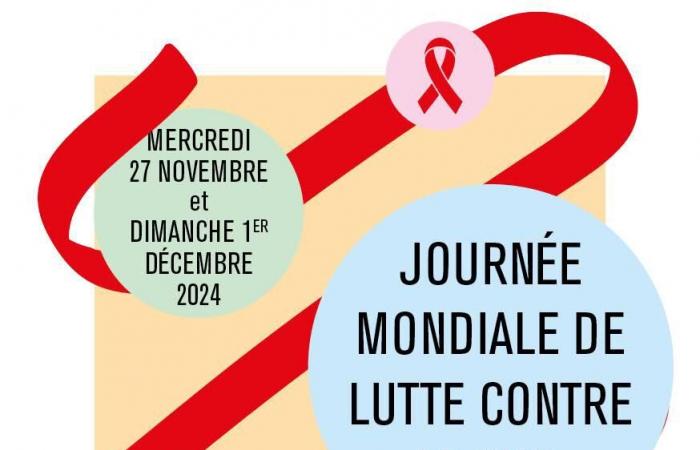FEMINA In 2024, we have the impression that AIDS is ancient history…
For Alexander Calmy Indeed, there is a certain form of fatigue with regard to HIV/AIDS. We, as caregivers and scientists, must recognize our share of responsibility. We loudly proclaimed that the virus was not transmitted under effective treatment, or that people living with HIV should be considered like any other person with a chronic illness. These assertions, although accurate, stem from major scientific, medical and social advances in recent years. However, they also helped convey the idea that AIDS was no longer a problem today.
In fact, globally, HIV infections continue to decline.
Yes, overall, it is correct, but the figures remain heterogeneous. On the European continent, for example, the number of infections continues to increase, as does the mortality rate.
So we can no longer really talk about an epidemic?
An epidemic can only be considered under control if it is under control everywhere and for all population groups affected. Until this is the case, it is premature to rejoice. To achieve public health goals, we may need to consider new strategies, so that no one is left behind.
What is the situation in Switzerland?
In recent years, despite the trough of Covid (editor’s note: in Switzerland as elsewhere, Covid has reduced screening capacities, due to confinement and the closure of many dedicated centers), the overall figures remain fairly stable, with 371 infections. with HIV newly diagnosed in 2022, according to the latest figures made public by the OFSP. And there are always patients with serious illnesses linked to HIV who are hospitalized, which concerns us. Of course, in Switzerland we are fortunate to benefit from innovative and effective anti-HIV treatments, as well as very high quality medical structures. People living with HIV are cared for in an exemplary manner, but we remain vigilant to preserve and strengthen this model.
Is screening part of it?
Yes, screening is essential. Moreover, Switzerland is among the countries where it is not entirely free. There are many good reasons to get tested, but unfortunately, in our country, too many people are still diagnosed at an already advanced stage of infection.
How to explain it?
It is essential to go beyond the caricatures associated with HIV and offer testing to all people who wish it, who request it, or who present suggestive symptoms. This must be done without discrimination or preconceived ideas.
Is the stigmatization suffered by people with HIV still strong?
Yes. And that questions the medical profession too. There was a very interesting presentation at the last World AIDS Congress in Munich; it focused on the stigmatization experienced by people living with HIV in healthcare settings. Thus, 57% of caregivers felt worried about giving a bandage or taking blood to a person living with HIV, and these figures are alarming. We need to improve information, communication, and move away from caricatures… also prevalent in healthcare systems.
We see this in particular in sex education classes, the question of AIDS is rarely addressed… Do young people feel concerned today?
It is true that we want to address contraception and sexually transmitted diseases, including HIV, in a very short time; the risk is therefore to make AIDS invisible, and to dissolve the messages. HIV is not among the concerns of young people today, in fact. The younger generations did not experience the dark years of AIDS, and it is quite normal that they distance themselves from these images. But on the other hand, HIV no longer exists for some of them, and therefore prevention messages are not very effective against an illness that has become invisible.
Can AIDS be cured today?
It is correct to say that there are so-called “cured” cases of AIDS, but there are only seven or eight in the world, out of the 40 million people living with HIV. The cases described as “cured” all required a bone marrow transplant, an extremely complex and risky procedure, which would only be considered in very specific situations (for example, to treat blood cancer). The patient from Geneva (editor’s note: a case of HIV remission after a bone marrow transplant) provided valuable information on the mechanisms allowing control of the viral reservoir. Although progress has been made, research still has a long way to go.
What motivates you?
I am often asked why I am involved in the fight for a cure for AIDS, since the treatments are very effective. However, this seems to me to be the best way to improve the quality of life of those affected and to reduce discrimination. To heal is to find a form of normality, in all aspects of life, social, emotional and intimate.
The numbers
97% of people with HIV on treatment have a viral load below the threshold required to prevent any transmission. In Switzerland, around 18,000 people are affected. A Swiss study shows that stigma remains strong: 84% of participants express concerns about disclosing their HIV status, and 37% report a feeling of discrimination in care. (source: hug.ch)
Program for the dedicated day organized in Geneva.
Did you like this content? Subscribe to our newsletter to receive all our new articles!







